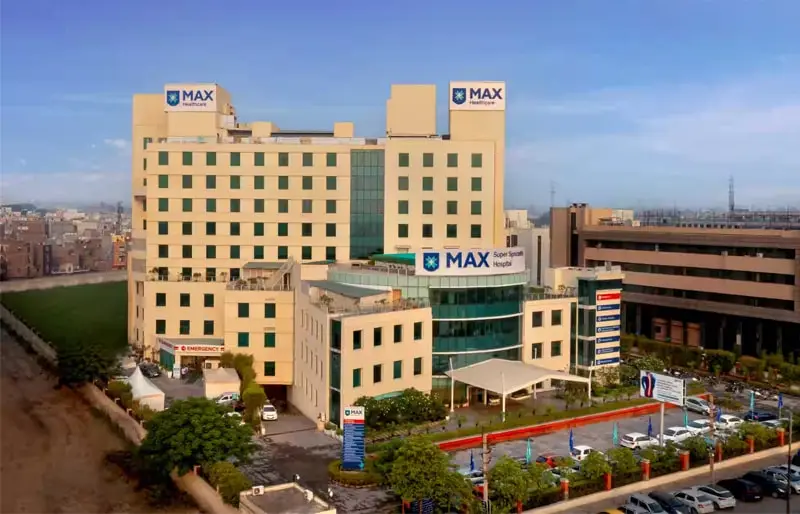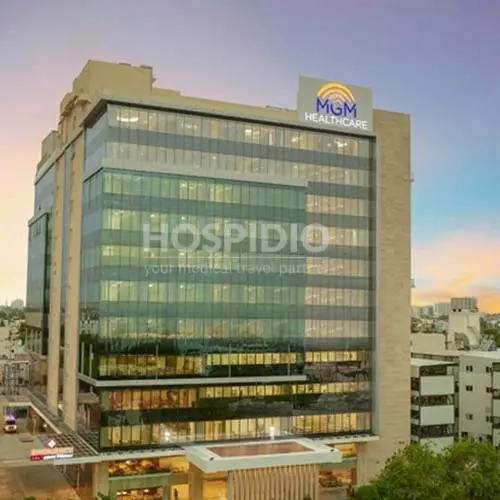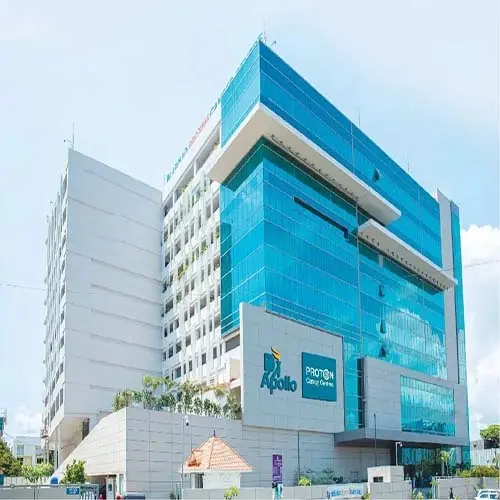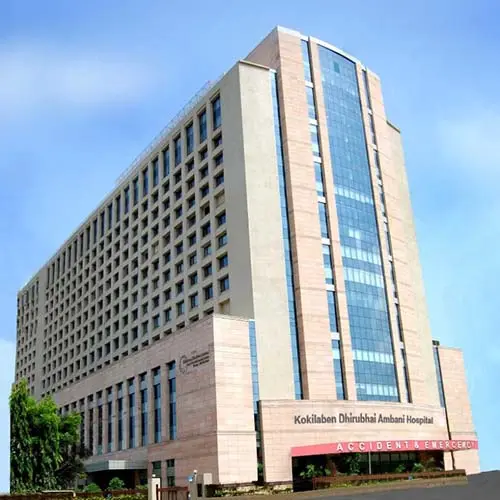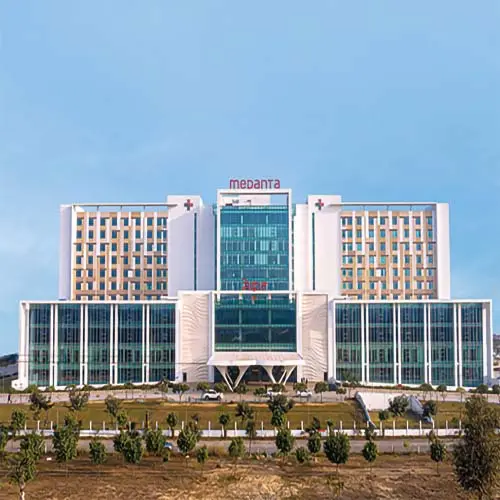Aplastic Anemia Treatment cost in India
The Aplastic Anemia treatment cost in India ranges from $4,000 to $35,000, which is approximately 1,40,000 to 29,75,000 Indian Rupees. The total cost depends on several factors such as the severity of the condition, the type of treatment required, the availability of a bone marrow donor, the choice of hospital, and the patient’s age and overall health condition.
Treatment options for aplastic anemia may include immunosuppressive therapy (IST) using drugs like ATG (Anti-Thymocyte Globulin) and Cyclosporine, supportive care with blood transfusions and antibiotics, or a bone marrow/stem cell transplant—especially in younger patients or those with a suitable donor. In many cases, a combination of immunosuppressive therapy and supportive care is initially used, with transplantation considered for severe or relapsed cases.
Cost Range of Aplastic Anemia Treatment cost in India
What is Aplastic Anemia?
Aplastic anemia is a rare but serious condition where the bone marrow stops producing enough blood cells. This includes red blood cells (which carry oxygen), white blood cells (which fight infections), and platelets (which help stop bleeding). As a result, a person with aplastic anemia may feel tired, bruise easily, or get frequent infections.
In simple terms, it's like the bone marrow—your body’s blood cell factory—slows down or shuts down, leading to a shortage of vital blood components. It can happen suddenly or develop over time and may be caused by autoimmune conditions, infections, certain medications, or exposure to chemicals, though sometimes the cause is unknown.
With timely diagnosis and proper treatment—such as medications, blood transfusions, or bone marrow transplant—many people with aplastic anemia can manage the condition successfully.
Get a free cost estimate
Causes of Aplastic Anemia
Cause Type | Description | Examples / Details |
Autoimmune Reaction | The body’s immune system mistakenly attacks the bone marrow, reducing blood cell production. | Often idiopathic (no clear reason). |
Medications & Toxins | Certain drugs or chemicals can damage bone marrow cells. | Chemotherapy, antibiotics like chloramphenicol, benzene exposure. |
Viral Infections | Some viruses can harm the bone marrow directly or trigger immune responses against it. | Hepatitis, Epstein-Barr virus (EBV), HIV, Parvovirus B19. |
Inherited (Genetic) Causes | Rare genetic disorders cause bone marrow failure, often diagnosed in children or young adults. | Fanconi anemia, Dyskeratosis congenita. |
Radiation Exposure | High doses of radiation can destroy bone marrow cells. | Radiation therapy, accidental radiation exposure. |
Unknown Causes (Idiopathic) | In many cases, the exact reason for bone marrow failure cannot be identified. | No specific cause found in about 50% of cases. |
Who is an Eligible Candidate for Aplastic Anemia Treatment in India?
1. Medical Eligibility Criteria
a) Confirmed Diagnosis of Aplastic Anemia
Patients must have a confirmed diagnosis based on:
- Complete Blood Count (CBC)
- Reticulocyte count
- Bone marrow aspiration and biopsy
- Additional tests to rule out leukemia or other bone marrow disorders Aplastic anemia is categorized as moderate, severe (SAA), or very severe (VSAA), which helps guide the treatment approach.
b) Severity of the Disease
- Severe and Very Severe Aplastic Anemia: Typically requires immediate treatment such as immunosuppressive therapy (IST) or bone marrow transplant.
- Moderate Aplastic Anemia: May not need immediate treatment but requires monitoring and supportive care.
2. Treatment-Specific Eligibility
a) Immunosuppressive Therapy (IST)
- Suitable for patients not eligible for bone marrow transplant or without a matched donor.
- Ideal for older adults or those with other health conditions
- Requires a functional immune system and no active infections
b) Bone Marrow / Stem Cell Transplant (BMT)
- Best option for younger patients (<40–50 years) with a matched sibling donor
- Patient must have:
- Good heart, kidney, and liver function
- No severe ongoing infections
- Acceptable performance status (able to carry out daily activities)
c) Supportive Care (Transfusions, Antibiotics)
- Available to all patients with low blood counts
- Especially useful in moderate cases or when definitive therapy is delayed
- Requires regular hospital access and monitoring
3. General Health & Fitness Criteria
a) Age Criteria
- Children and young adults are preferred candidates for bone marrow transplants.
- Older adults may be more suitable for IST and supportive care, depending on their health status
b) Performance Status and Organ Function
- Patients must have a reasonable level of fitness (ECOG score of 0–2).
- Should not have severe organ damage (heart, lungs, liver, or kidneys)
4. Infection & Immunity Status
- Patients should not have uncontrolled infections before starting IST or transplant.
- Those with hepatitis B, C, or HIV may still be treated, but with additional precautions.
- Vaccination status and infection screening are often reviewed prior to treatment
Types of Aplastic Anemia Treatment Cost
Here is an overview of the common types of Aplastic Anemia Treatment along with their approximate cost range in USD:
Types of Aplastic Anemia Treatment in India | Description | Cost Range in USD |
Immunosuppressive Therapy (IST) | Standard first-line treatment for patients without a matched bone marrow donor, using medications like ATG (Anti-Thymocyte Globulin) and Cyclosporine to suppress the immune system and allow bone marrow recovery. | $4,000 – $8,000 |
Allogeneic Bone Marrow Transplant (BMT) | A curative option for severe cases, especially in younger patients with a matched donor; involves replacing the damaged bone marrow with healthy stem cells from a donor. | $22,000 – $35,000 |
Supportive Care (Transfusions & Medications) | Ongoing care including blood and platelet transfusions, antibiotics, and growth factors to manage symptoms and prevent complications in moderate or waiting-list patients. | $2,000 – $5,000 annually |
Aplastic Anemia Treatment Cost in India Inclusions
- First consultation
- Treatment as advised
- Routine drugs and consumables required during hospitalization
- Pre-anesthesia check up and clearance
- Hospital stay and meals as per the package
Aplastic Anemia Treatment Cost in India Exclusions
- Pre-operative examination and tests
- Hotel stay, meals and flights
- Extended hospital stay
- Post-treatment follow-ups
- Treatment for any other underlying medical conditions
- Any complex investigations or drugs
Other Factors Affecting Aplastic Anemia Treatment Cost in India
- Type of surgery advised
- Choice of location, doctor, and hospital
- Pre-existing medical history
- Type and duration of treatment advised
Types of Tests for Aplastic Anemia in India
Test Category | Brief Description | Common Tests and Cost in USD |
Blood Tests | To check the levels of red cells, white cells, and platelets, and rule out other conditions. | Complete Blood Count (CBC), Reticulocyte Count, Peripheral Smear. Kidney & Liver Function Tests. The cost will be $200-$250 approx. |
Bone Marrow Examination | Checks the bone marrow’s ability to produce blood cells and confirms the diagnosis. | Bone Marrow Aspiration, Bone Marrow Biopsy. The cost will be around $500-$600. |
Immunological Tests | To detect immune system activity against bone marrow cells. | Flow Cytometry for PNH Clones, Autoimmune Screening. The cost will be around $250-$300. |
Viral Screening | To rule out infections that can cause low blood counts. | Hepatitis B & C, HIV, Epstein-Barr Virus (EBV), Parvovirus B19 tests. The cost will be around $50-$80. |
Genetic Tests | Identifies inherited bone marrow failure syndromes. | Chromosomal Analysis, Genetic Mutation Testing (Fanconi anemia panels). The cost will be around $150. |
HLA Typing | Matches patients and donors for bone marrow transplantation. | HLA Typing Test. The cost will be around $ 100 approx. per person. |
Why India is Preferred for Aplastic Anemia Treatment?
India has become a top destination for aplastic anemia treatment due to its exceptional combination of medical expertise, advanced facilities, and cost-effective care. Aplastic anemia is a serious condition where the bone marrow stops producing enough new blood cells, requiring complex treatment approaches such as bone marrow transplantation or immunosuppressive therapies.
In Western countries like the United States, the cost of a bone marrow transplant can exceed $100,000 to $150,000. In contrast, India offers the same procedure at a much more affordable range of $22,000 to $35,000, without compromising on the quality of care. This significant cost difference makes treatment in India far more accessible to patients from various parts of the world.
The medical landscape in India is supported by some of the finest hematologists and transplant specialists who have extensive experience handling both straightforward and complicated cases of aplastic anemia. These doctors are often trained in the UK, US, or Europe and are well-versed in the latest treatment protocols. Indian hospitals routinely perform matched sibling donor transplants, unrelated donor transplants, and haploidentical transplants, supported by robust diagnostic capabilities such as next-generation sequencing, HLA typing, and flow cytometry.
Infrastructure plays a crucial role in ensuring treatment success, and India excels in this area as well. Many hospitals have dedicated bone marrow transplant units with HEPA-filtered rooms and high-end infection control measures, ensuring safety for immunocompromised patients. Additionally, Indian medical centers offer immunosuppressive therapies like ATG (Anti-thymocyte Globulin) and cyclosporine for patients who may not be eligible for transplants.
These therapies are administered under the close supervision of specialized hematology teams. Cities like Delhi NCR, Mumbai, Chennai, Bangalore, Hyderabad, and Pune house some of the top hospitals in the country known for their bone marrow transplant programs. Notable names include Fortis Memorial Research Institute and Medanta The Medicity in Gurugram, Max Super Speciality Hospital in Delhi, Kokilaben Dhirubhai Ambani Hospital and Apollo Navi Mumbai in Mumbai, Apollo Hospital and MGM Healthcare in Chennai, Fortis Hospital and Manipal Hospitals in Bangalore, and KIMS Hospital in Hyderabad.
These centers are equipped with state-of-the-art technology and have consistently reported high success rates for bone marrow transplants in both children and adults. Another key advantage of seeking treatment in India is the comprehensive support system for international patients. Leading hospitals offer assistance with medical visas, airport pickups, accommodation arrangements, and even language interpretation services.
Dedicated international patient coordinators ensure a smooth journey from diagnosis to post-treatment care, allowing families to focus on recovery rather than logistics. The success rate of bone marrow transplants for aplastic anemia in India is commendable, ranging from 60% to 90% depending on various factors such as patient age, donor availability, and the stage at which treatment begins. Immunosuppressive therapy, too, shows a good response rate, especially in young patients.
These outcomes, coupled with lower costs, expert care, and modern infrastructure, make India a preferred and trusted destination for aplastic anemia treatment among patients from Africa, the Middle East, Southeast Asia, and beyond.
Best Hospitals for Aplastic Anaemia Treatment in India
Top Hematologists for Aplastic Anemia Treatment in India
,FAQs
Aplastic anemia is a rare blood disorder where the bone marrow fails to produce enough red blood cells, white blood cells, and platelets. This causes weakness, frequent infections, and easy bleeding.
Treatment may include:
- Medications (immunosuppressive therapy, antibiotics, growth factors)
- Blood transfusions to manage symptoms
- Bone marrow (stem cell) transplant, which can cure the disease in many patients
Success depends on the patient’s age, overall health, and treatment type. Stem cell transplant offers the highest success rate, especially in younger patients, while medications can effectively control the condition in others.
Recovery varies:
- With medications, improvement may take a few months.
- After bone marrow transplant, full recovery can take 6–12 months with regular follow-ups.
Patients with severe aplastic anemia, especially younger ones with a matched donor, are usually the best candidates for a transplant.


